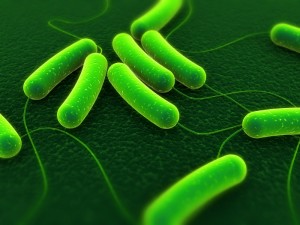 E. coli O157:H7 evolved to become deadly 30 years ago, according to a new study by researchers at the University of Edinburgh and Public Health England. The study explains why deadly outbreaks of began in the 1980s and demonstrates why the bacteria should be monitored closely, researchers say.
E. coli O157:H7 evolved to become deadly 30 years ago, according to a new study by researchers at the University of Edinburgh and Public Health England. The study explains why deadly outbreaks of began in the 1980s and demonstrates why the bacteria should be monitored closely, researchers say.
E. coli bacteria have been living in the intestines of people and animals for at least 175 years. Most strains are harmless. But some, such as of E. coli O157:H7, produce Shiga-toxins, compounds which cause serious infections in humans. Of the two types of these shiga-toxins they identified, stx1 and stx2a, researchers say stx2a causes the most serious illnesses.
Although they show no signs of the disease because they do not have the gene that allows the bacteria to cause infections, cows are the main source of E. coli O157. Animals infected with strains producing the stx2a shiga-toxin excrete higher levels of dangerous bacteria in their manure, increasing the odds of spreading the disease, either through contaminated beef or by cross-contaminating other foods, either in the field, transport, processing facility, or kitchen.
“Thankfully, dangerous E. coli outbreaks remain relatively rare. Our research underlines the need to study the genetic code of strains that cause infections in humans and those present in farmed animals,” said Professor David Gally, of the University of Edinburgh’s Roslin Institute.
“Good hygiene practices — both with food and when out enjoying the countryside — can help to minimise the risk of these and other severe infections. Our work endeavours to understand how these toxic strains persist in cattle and the best ways to prevent them spreading to us,” he continued.
The study was conducted by the University of Edinburgh, Public Health England, Animal Laboratories and Plant Health Agency, the Scottish E. coli Reference Laboratory, Scotland’s Rural College and the University of East Anglia. It was published in the Microbiology Society’s journal Microbial Genomics.
Symptoms of an E. coli infection include severe abdominal cramps, bloody diarrhea caused by toxins attacking the intestinal wall, and a mild fever. Some of these infections can develop into hemolytic uremic syndrome (HUS), a type of kidney failure.




